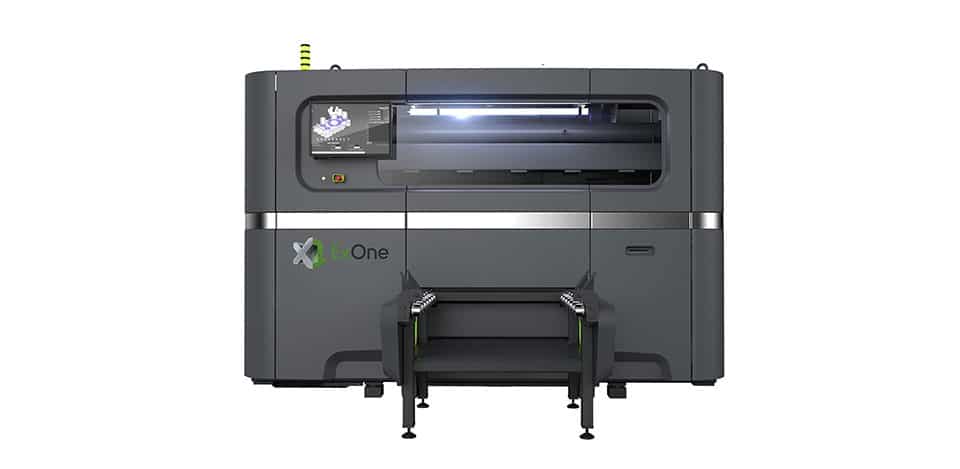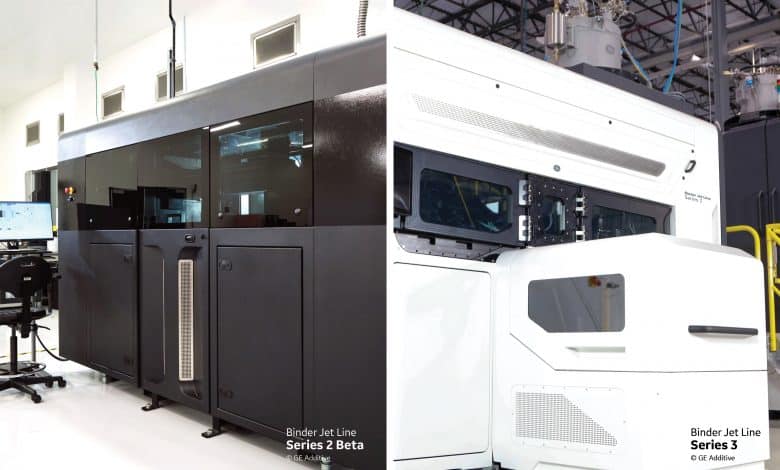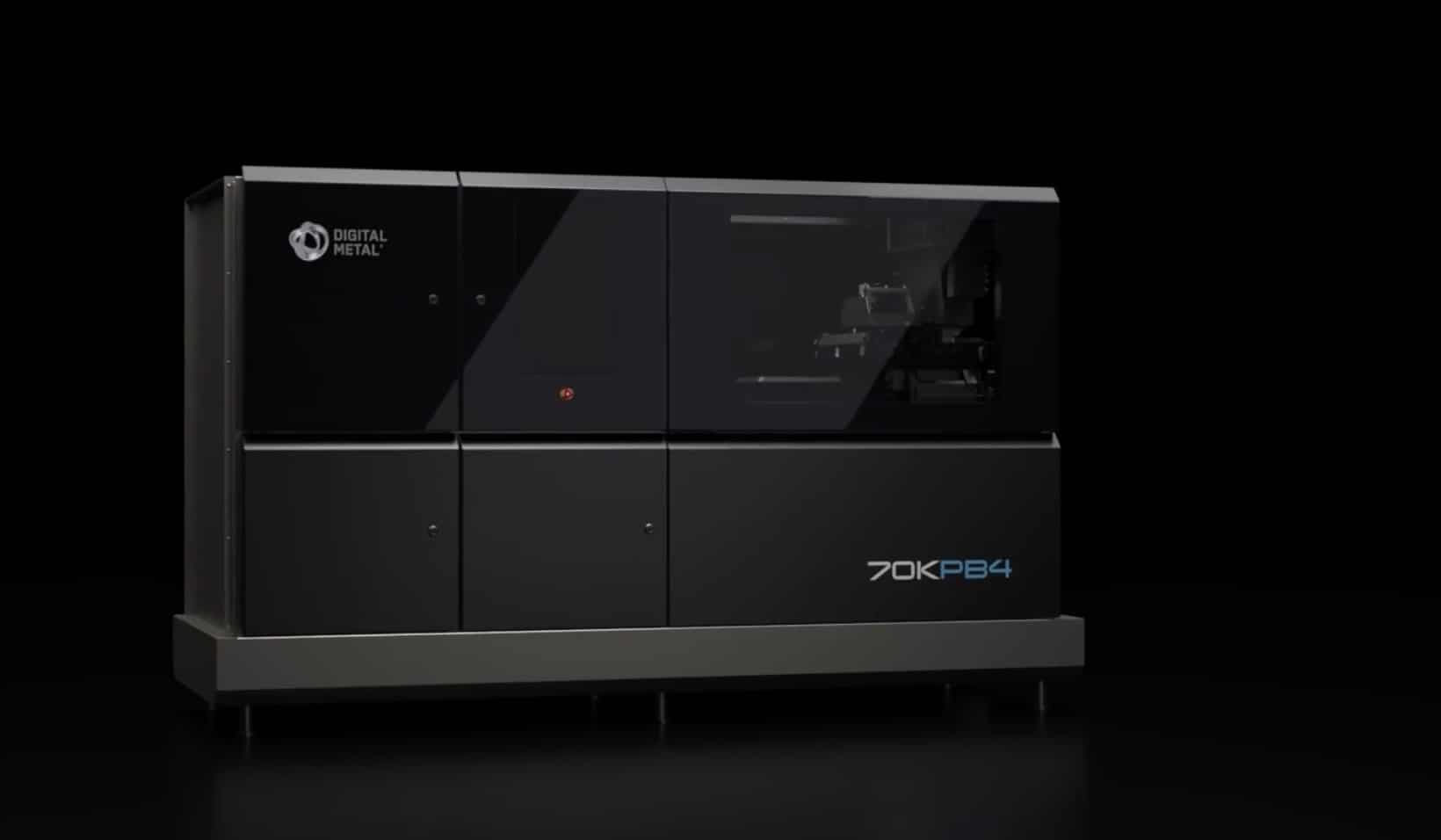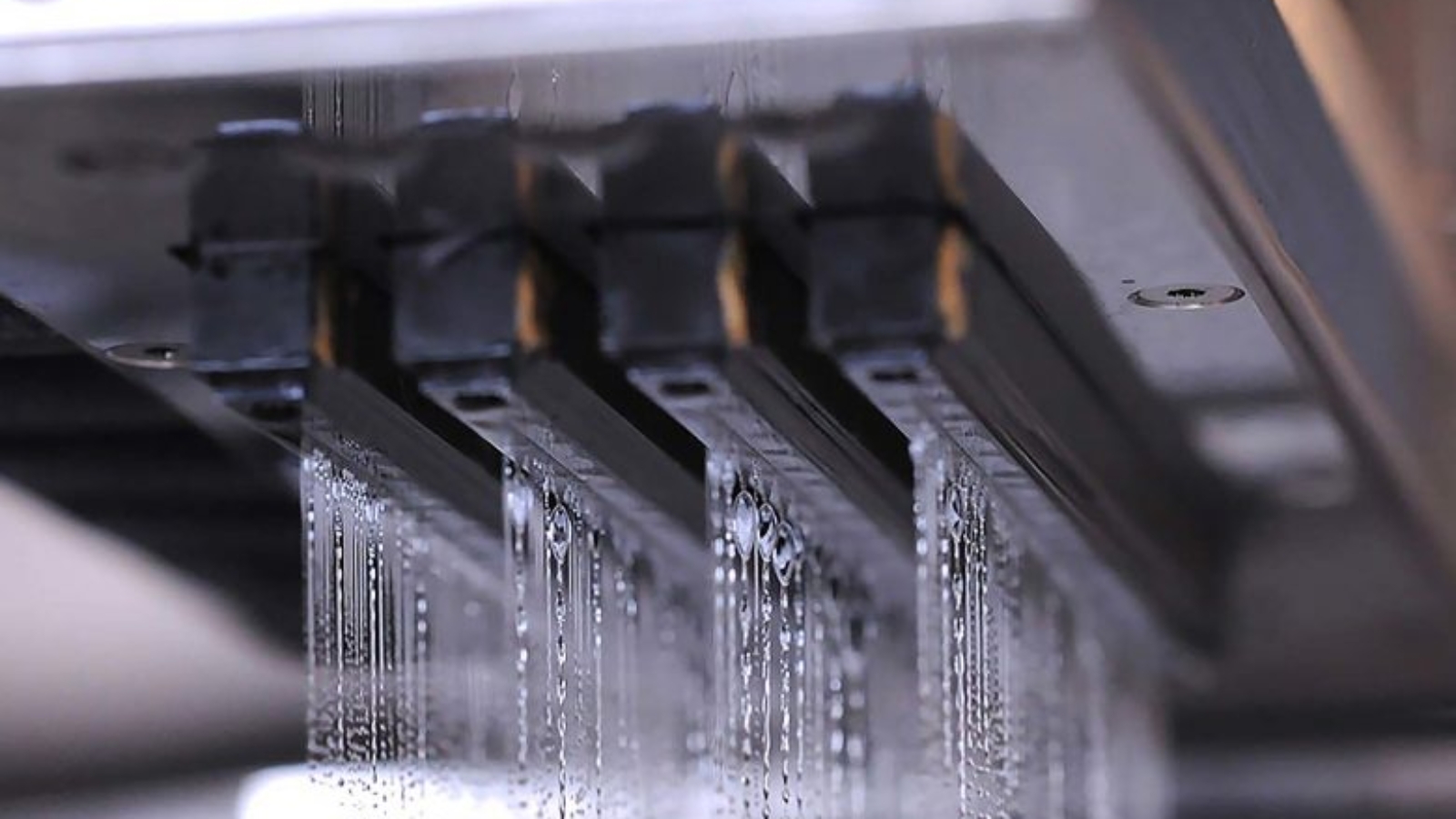Metal binder jetting technology, now also known by the acronym MBJ, is, at the same time, the first and the newest opportunity for binder-based metal AM processes. Invented at MIT in 1993, the technology uses an inkjet printhead to apply binder to a bed of metal powder and form green parts which are similar to parts produced by metal injection molding (MIM). These parts then undergo a series of post-process (which differ for each specific technology), including sintering, to deliver final parts.
Segment pioneer ExOne introduced its first metal binder jetting system nearly two decades ago, after licensing the original patent from MIT in 1996. However, only recently has the company introduced new systems tailored for higher productivity. ExOne did so as a response to several other large players announcing plans to enter the market for metal binder jetting. In particular, working with metal binder jetting technology inventor Eli Sachs, Desktop Metal was founded in 2015 by serial entrepreneur Ric Fulop, and introduced the concept of a high-productivity metal binder jetting system. Fulop’s intuition was that by optimizing and automating the post-processing phase (including eliminating the need for metallic supports during the build phase), metal binder jetting workflows could deliver significantly higher productivity and thus lower per part cost than the more established metal powder bed fusion technologies.
After extensive development, these machines have now entered full-scale commercialization. The relationship between the two companies came full circle when Desktop Metal conducted a successful IPO via a SPAC merger in 2020 and used the funds to acquire ExOne in 2021.
The growing competition in this segment, as the technology evolves to target larger batch production than metal PBF processes, brought these two fierce competitors together, within a scenario that is seeing many things happening at the same time. Desktop Metal and ExOne joined forces to compete against two large industrial groups that have already become leaders in different areas of production 3D printing: GE (GE Additive) and HP (HP 3D Printing).

The MBJ process
The metal binder jetting process involves selective deposition of binder droplets and ex- tensive post-processing. First, inkjet-style printheads selectively deposit droplets of binder material onto a bed of metal powder until an entire layer has been created; the printing plate then lowers, a new layer of powder is applied, and another layer of binder is deposited. When every layer of binder has been deposited, the part (in its brittle green state) is left to cure for several hours. To further increase its strength and reduce its porosity, the part must be put through a process of sintering or infiltration. Sintering involves heating the part for up to 36 hours in a furnace at around 100°C. This burns away the binder material and causes the metal particles to fuse together. Infiltration introduces a molten metal with a low melting temperature, which seeps through the part and fills the voids left by the burnt-out binder material. There are advantages and disadvantages to each method. Infiltration produces slightly less dense parts than sintering, but sintering can cause unwanted and unpredictable part shrinkage.
Metal binder jetting is seen by multiple stakeholders as the most viable solution for introducing high-throughput, cost-effective, large batch and serial additive manufacturing to segments such as mass-market automotive and consumer products, as well as a viable solution for large batch production of parts for industrial machinery.

Because the metals are not melted during the process, binder jetting eliminates some issues related to in-process residual stresses and prints green parts at a very high speed. No supports are required, as overhangs are supported by loose powders in the bed, which results in shorter post-processing and more complex geometrical possibilities.
However, the need to sinter parts in a furnace after fabrication presents some inherent challenges. These include the cost of sintering systems, the long times required for furnace sintering and the need to account for significant part shrinkage through advanced software capabilities, which presents more challenges for AM than other manufacturing processes due to the complexity of certain AM parts.

MBJ BENEFITS
- Higher productivity (up to tenfold compared to PBF)
- Several large operators entering the market with significant investments
- Does not require supports
- Potentially lower CapEx (compared to PBF)
- Produces net shape parts
- Very high-resolution potential
MBJ CHALLENGES
- Still unproven for large-scale production
- Requires lengthy sintering in a furnace as a post-process step
- Some MBJ processes require lengthy debonding
- Significant part shrinkage to account for
- Still mostly unproven for fully dense parts without additional infiltration steps
- Still limited selection of available materials (compared to PBF)
- Some processes require finer powders than PBF
- Challenging to produce large parts

MBJ trends compared to other metal AM technologies
In its first Metal AM Market Report, 3dpbm Research forecasted overall metal AM hardware revenues to grow at 33.7% CAGR over the next 10-year period, from just under $1 billion in yearly global sales in 2020 to just over $18 billion in yearly global sales by 2030. Binder jetting is expected to grow at 55% CAGR. This very high rate is down to a combination of binder jetting being only marginally commercially explored until now and its large adoption potential for the upcoming decade, supported by major investments.
Manufacturing on Demand
Binder jetting is seen as a key technology to enable large throughput AM production in segments such as automotive and consumer products. Bound metal is currently more established than binder jetting, hence the lower CAGR of 45.8%; however, its overall potential as the most affordable metal AM process is also still largely unexplored.

MBJ is here
Starting in 2017-2018, GE Additive and HP 3D printing revealed they were entering the market for metal binder jetting with the goal of offering high-productivity systems within a few years. The pandemic slowed down their effort but the time has now arrived for full market commercialization of their first metal binder jetting systems. In the meantime, other companies also entered this market segment offering credible production solutions: these include Markforged (the US company acquired another MBJ pioneer, Digital Metal, in 2022) and Ricoh (by developing its own solution in-house).
HP 3D Printing vs GE Additive
As we will examine more in-depth in the dedicated feature story of this eBook, HP 3D Printing was the first large industrial player to commit to developing a production-capable MBJ technology. What is today known at MetalJet was first announced at the IMTS 2018 exhibit, along with a timeline for the technologies developed in collaborations with key alpha and beta partners. The market-ready machine, the Metal Jet S100 was finally presented at IMTS 2022 and is on display for European customers for the first time at Formnext 2022. HP is entering the metal 3D printing production segment leveraging the overall successful experience in the polymer AM segment with MultiJet Fusion technology, which dramatically accelerated and reduced costs for the production of polymer AM parts.
The next contender to MBJ market dominance, GE Additive, is entering this segment from the experience that the company built in metal AM production via metal PBF processes. In 2016, General Electric acquired German laser metal PBF hardware manufacturer Concept Laser and Swedish electron beam metal PBF hardware manufacturer Arcam (and Arcam-owned metal powder manufacturer AP&C). The Binder Jet Line Series 3 has been developed to additively manufacture complex, small, and large parts, up to the weight of 25kg, in stainless steel, with no known limitations on maximum wall thickness. Based on input from customers and partners during the technology development phase, GE Additive is focused on enabling the eventual deployment of 40, 50, and 100+ machine installations that will drive repeatable process quality, while minimizing operator contact with equipment and materials.

Markforged/Digital Metals and Ricoh
The remaining contenders include Markforged/Digital Metal and Ricoh. While the investments and efforts behind these projects are not nearly as significant as those made by the previously mentioned companies, they both present unique opportunities.
The Markforged/Digital Metal deal is almost identical in nature and strategy to the Desktop Metal/ExOne merger. Markforged is a direct competitor to Desktop Metal in the bound metal 3D printing segment (the two companies also went through a lengthy patent court case), however, Markforged can leverage an already successful composite 3D printing solutions business. Just like Desktop Metal, Markforged went public through a SPAC merger finalized in 2022 and raised significant funds. Some of these were immediately used to acquire metal binder jetting pioneer Digital Metal from Swedish company Hoganas and its DMP/PRO metal binder jetting technologies.
Ricoh is farther behind in the metal MBF segment but the company’s world-leading expertise in the inkjet printhead market can be a formidable asset, as it has been in HP’s own venture. The Japanese company is currently keeping its additive manufacturing development under relatively tight wraps, with much of it taking place at its Customer Experience Center in Telford, UK. The CEC is looking to develop 3D printers and a total solution for production workflow to manufacture aluminum parts using MBJ 3D.
One last company to keep in mind in this segment is US-based 3DEO. The reason why we do not consider them a contended in the MBJ market is that they use a proprietary MBJ technology for internal part production. Focusing primarily on large batches of a very small part (similar to Digital Metals), 3DEO has produced the largest number of MBJ 3D printed parts out of any company to date, according to data published in 3dpbm’s Metal AM Opportunities and Trends 2020-2030 market report.
This article is a preview of the complete metal binder jetting market segment analysis presented in the upcoming AM Focus Metal eBook that will be released ahead of Formnext.
You might also like:
Sintratec to present Sintratec S3 SLS 3D printer at Formnext: The biggest additive manufacturing exhibition in Europe, Formnext, will take place from 15th to 18th November 2022. It was at this trade show in Frankfurt where the Swiss 3D Printing company Sintratec announced the groundbreaking Sintratec S2 system in 2018 and where it will now present the next generation of their 3D printing solution, the Sintratec S3, to the global audience for the first time.
* This article is reprinted from 3D Printing Media Network. If you are involved in infringement, please contact us to delete it.
Author: Davide Sher


Leave A Comment